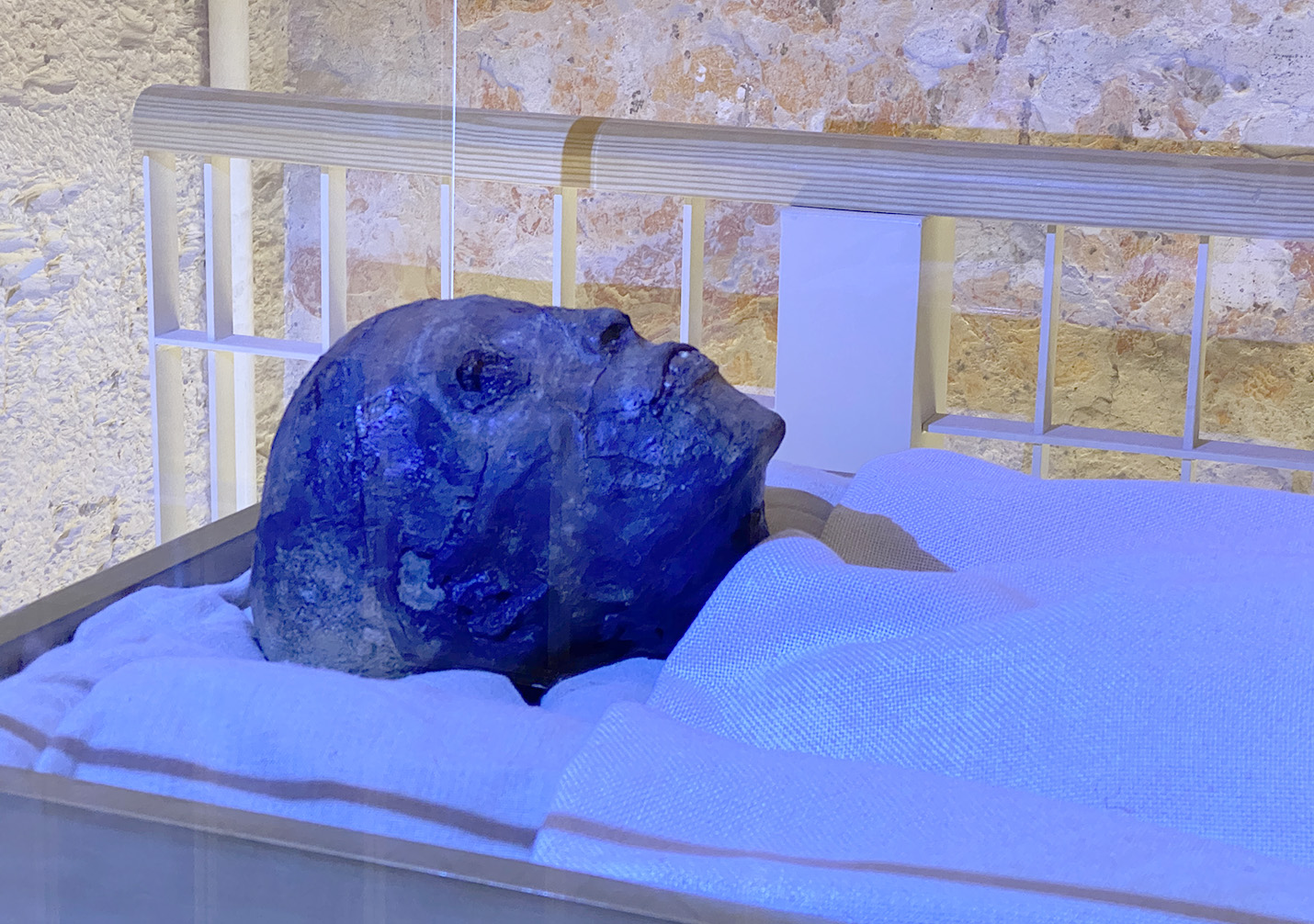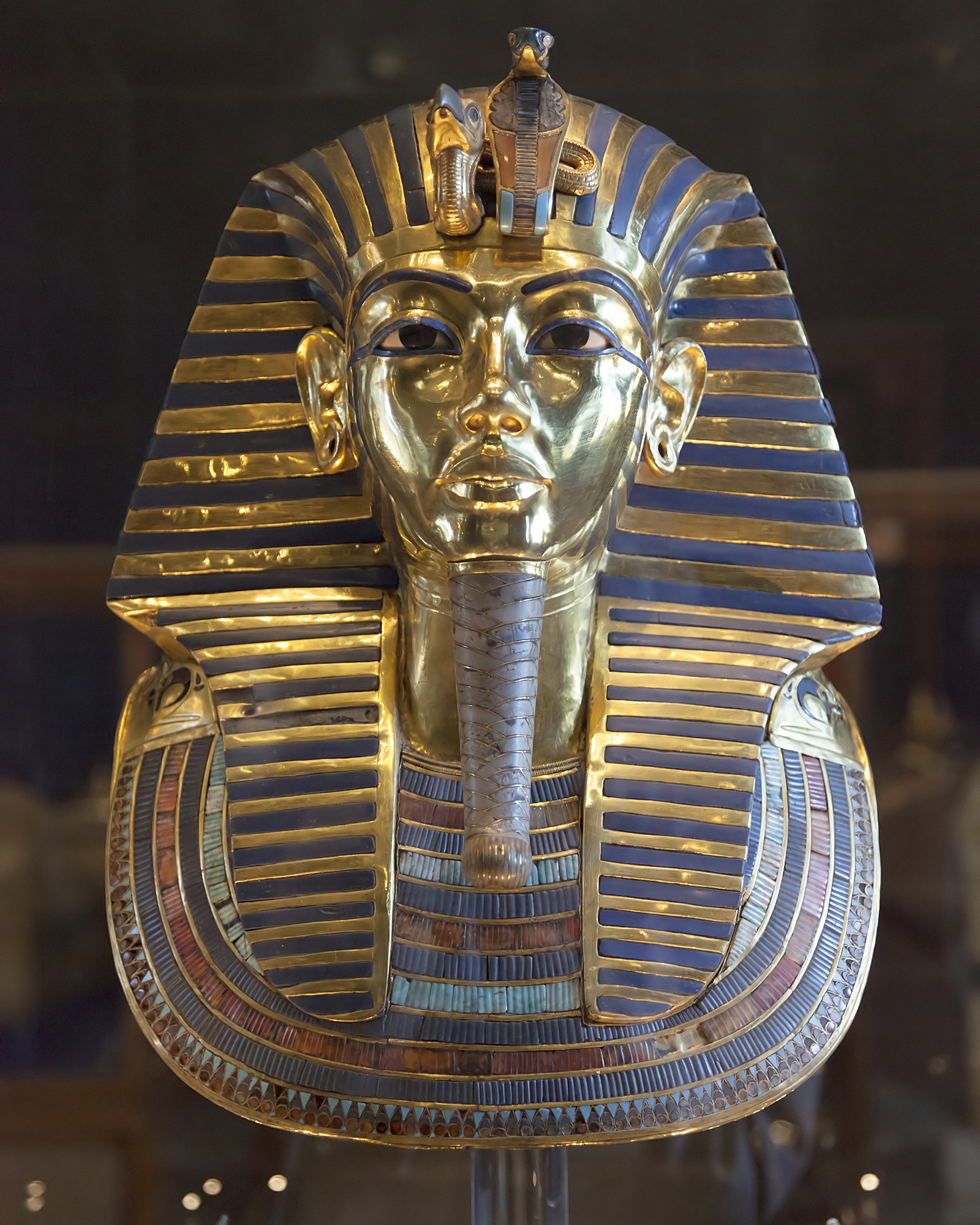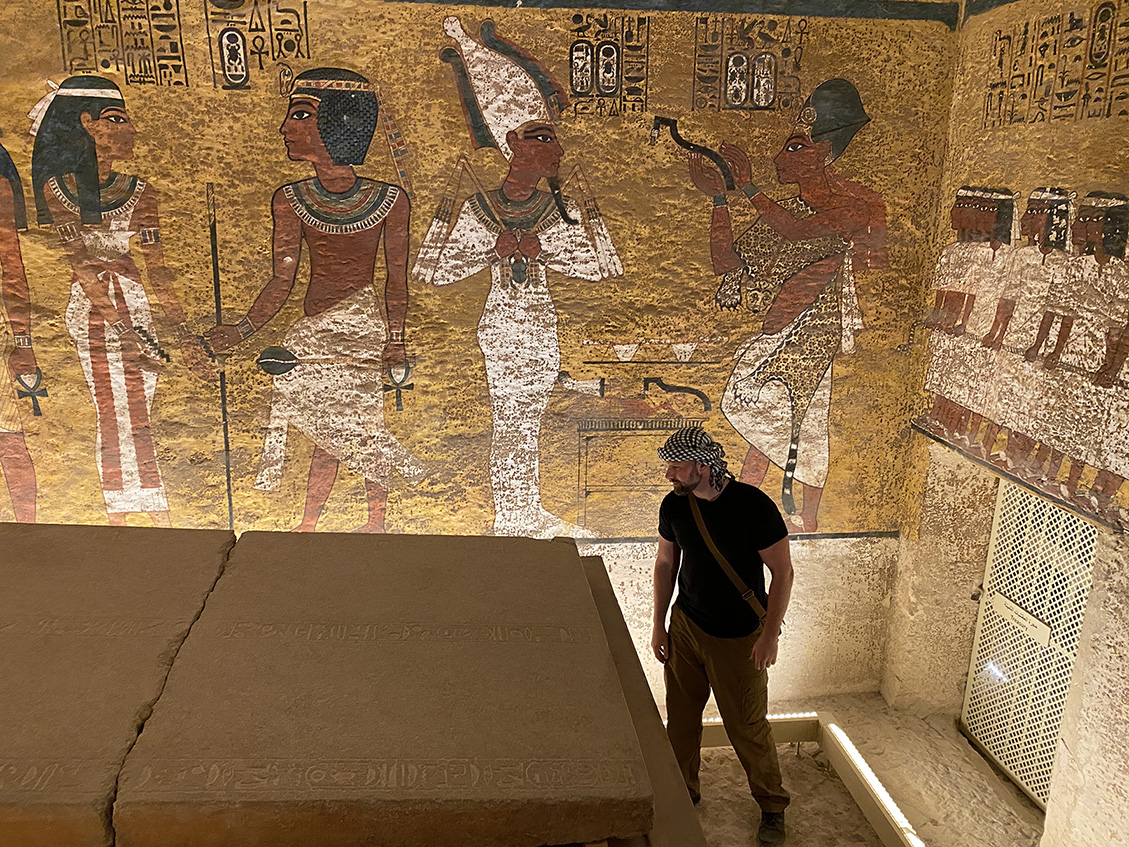Tutankhamen
Tutankhamen or Tutankhamun commonly referred to as King Tut, was an ancient Egyptian pharaoh who was the last of his royal family to rule during the end of the 18th Dynasty (ruled c. 1332 – 1323 BC in the conventional chronology) during the New Kingdom of Egyptian history. His father is believed to be the pharaoh Akhenaten, identified as the mummy found in the tomb KV55. His mother is his father's sister, identified through DNA testing as an unknown mummy referred to as "The Younger Lady" who was found in KV35.
In modern times, Tutankhamun became famous as a result of the 1922 discovery of his tomb (KV62) by a team led by the British Egyptologist Howard Carter and sponsored by the British aristocrat George Herbert. Although it had clearly been raided and robbed in ancient times, it retained much of its original contents, including the king's undisturbed mummy. The discovery received worldwide press coverage; with over 5,000 artifacts, it gave rise to renewed public interest in ancient Egypt, for which Tutankhamun's mask, now preserved at the Egyptian Museum, remains a popular symbol.
Some of his treasure has traveled worldwide, with unprecedented response; the Egyptian government allowed tours of the tomb beginning in 1961. The deaths of some individuals who were involved in the excavation have been popularly attributed to the "curse of the pharaohs" due to the similarity of their circumstances. Since the discovery of his tomb, he has been referred to colloquially as "King Tut."
On 4 November 2007, 85 years to the day after Carter's discovery, Tutankhamun's mummy was placed on display in his underground tomb at Luxor, when the linen-wrapped mummy was removed from its golden sarcophagus to a climate-controlled glass box.
Name
His names—Tutankhaten and Tutankhamun—are thought to mean "Living image of Aten" and "Living image of Amun", with Aten replaced by Amun after Akhenaten's death. A small number of Egyptologists, believe the translation may be incorrect and closer to "The-life-of-Aten-is-pleasing" or reads as "One-perfect-of-life-is-Aten".
Early life
Tutankhamun was born in the reign of Akhenaten, during the Amarna Period of the late Eighteenth Dynasty of Egypt. His original name was Tutankhaten or Tutankhuaten, meaning "living image of Aten," reflecting the shift in ancient Egyptian religion known as Atenism which characterized Akhenaten's reign.
His parentage is debated as they are not attested in surviving inscriptions. He was certainly a prince, as a fragmentary inscription from Hermopolis refers to "Tutankhuaten" as a "king's son." He is generally thought to have been the son of Akhenaten or his successor Smenkhkare. Inscriptions from Tutankhamun's reign treat him as a son of Akhenaten's father, Amenhotep III, but that is only possible if Akhenaten's 17-year reign included a long co-regency with his father, a possibility that many Egyptologists once supported but is now being abandoned. His mother has been variously suggested to be Akhenaten's chief wife Nefertiti, Amenhotep III's daughter Beketaten, or Akhenaten's daughters Meritaten or Meketaten.
Reign
Tutankhamun took the throne at eight or nine years of age under the unprecedented viziership of his eventual successor, Ay, to whom he may have been related.
At the beginning of Tutankhaten's reign, the royal court was still located at Amarna, and evidence from his tomb shows that the Aten was still acknowledged. But several pieces of evidence suggest that his court was trying to reconcile Atenism with the traditional religion, and activity at Amarna decreased during the first four years of his reign. These years saw dramatic reversals of Akhenaten's policies, which, given the king's young age, must have been instigated by his advisors. Tutankhamun restored the Ancient Egyptian religion after its dissolution by his father, enriched and endowed the priestly orders of two important cults and began restoring old monuments damaged during the previous Amarna period.
He moved his father's remains to the Valley of the Kings as well as relocating the capital from Akhetaten back to Thebes.
When Tutankhaten became king, he married Ankhesenpaaten, one of Akhenaten's daughters, who later changed her name to Ankhesenamun. He fathered two daughters who died at or soon after birth and were buried with him in his tomb.
Many of Tutankhamun's construction projects were uncompleted at the time of his death and were completed by or usurped by his successors, especially Horemheb. The sphinx avenue was completed by his successor Ay and the whole was usurped by Horemheb.
The country was economically weak and in turmoil following the reign of Akhenaten. Diplomatic relations with other kingdoms had been neglected, and Tutankhamun sought to restore them, in particular with the Mitanni. Evidence of his success is suggested by the gifts from various countries found in his tomb.[71] Despite his efforts for improved relations, battles with Nubians and Asiatics were recorded in his mortuary temple at Thebes, both victories for Egypt.[72] Also, as far as is known, Tutankhamun's military reign was undefeated, and is one of several other undefeated reigns in ancient Egypt's history.
Death
There are no surviving records of the circumstances of Tutankhamun's death; it has been the subject of considerable debate and major studies.
Tutankhamun was physically disabled with a deformity of his left foot along with bone necrosis that required the use of a cane, several of which were found in his tomb. He had other health issues including scoliosis and had contracted several strains of malaria. Hawass and his team postulate that his death was likely the result of the combination of his multiple weakening disorders, a leg fracture, perhaps as the result of a fall, and a severe malarial infection. Malaria was an endemic in ancient Egypt, as the Nile Delta provided ideal ecological conditions for robust reproduction of the mosquitos carrying the plasmodium falciparum parasite responsible for causing human malarial infections.
Tutankhamun's death marked the end of the royal bloodline of the Eighteenth Dynasty.
Tomb
Tutankhamun was buried in a tomb that was unusually small considering his status. His death may have occurred unexpectedly, before the completion of a grander royal tomb, causing his mummy to be buried in a tomb intended for someone else. This would preserve the observance of the customary 70 days between death and burial. His tomb was robbed at least twice in antiquity, but based on the items taken (including perishable oils and perfumes) and the evidence of restoration of the tomb after the intrusions, these robberies likely took place within several months at most of the initial burial. The location of the tomb was lost because it had come to be buried by debris from subsequent tombs, and workers' houses were built over the tomb entrance.
King Tut's Curse
For many years, rumors of a "curse of the pharaohs" (probably fueled by newspapers seeking sales at the time of the discovery) persisted, emphasizing the early death of some of those who had entered the tomb. The most prominent was George Herbert, 5th Earl of Carnarvon, who died on 5 April 1923, five months after the discovery of the first step leading down to the tomb on 4 November 1922.
The cause of Carnarvon's death was pneumonia supervening on [facial] erysipelas (a streptococcal infection of the skin and underlying soft tissue). The Earl had been in an automobile accident in 1901 making him very unhealthy and frail. His doctor recommended a warmer climate so in 1903 the Carnarvons traveled to Egypt where the Earl became interested in Egyptology. Along with the stresses of the excavation, Carnarvon was already in a weakened state when an infection led to pneumonia.
A study showed that of the 58 people who were present when the tomb and sarcophagus were opened, only eight died within a dozen years; Howard Carter died of lymphoma in 1939 at the age of 64. The last survivors included Lady Evelyn Herbert, Lord Carnarvon's daughter who was among the first people to enter the tomb after its discovery in November 1922, who lived for a further 57 years and died in 1980, and American archaeologist J.O. Kinnaman who died in 1961, 39 years after the event.
In 2021, occultist and author Travis McHenry became violently ill immediately following his exploration of Tutankhamun's tomb, which included a solo examination of the burial sarcophagus and mummy. During the following week, he developed a fever, rectal bleeding, and went completely blind before doctors discovered he had contracted a severe bacterial infection which spread to his spine.
Legacy
The 1922 discovery by Howard Carter of Tutankhamun's nearly intact tomb, in excavations funded by Lord Carnarvon, received worldwide press coverage. Tutankhamun's tomb is the only royal tomb in the Valley of the Kings found in near-intact condition.
With over 5,000 artifacts, it sparked a renewed public interest in ancient Egypt, for which Tutankhamun's mask, now in the Egyptian Museum, remains a popular symbol. The deaths of a few involved in the discovery of Tutankhamun's mummy have been popularly attributed to the curse of the pharaohs.
Some of his treasure has traveled worldwide with unprecedented response. The Egyptian Supreme Council of Antiquities allowed tours beginning in 1962 with the exhibit at the Louvre in Paris, followed by the Kyoto Municipal Museum of Art in Tokyo, Japan. The exhibits drew in millions of visitors. The 1972–1979 exhibit was shown in United States, Soviet Union, Japan, France, Canada, and West Germany. There were no international exhibitions again until 2005–2011. This exhibit featured Tutankhamun's predecessors from the 18th Dynasty, including Hatshepsut and Akhenaten, but did not include the golden death mask. The treasures 2019–2022 tour began in Los Angeles and will end in 2022 at the new Grand Egyptian Museum in Cairo, which, for the first time, will be displaying the full Tutankhamun collection, gathered from all of Egypt's museums and storerooms.


